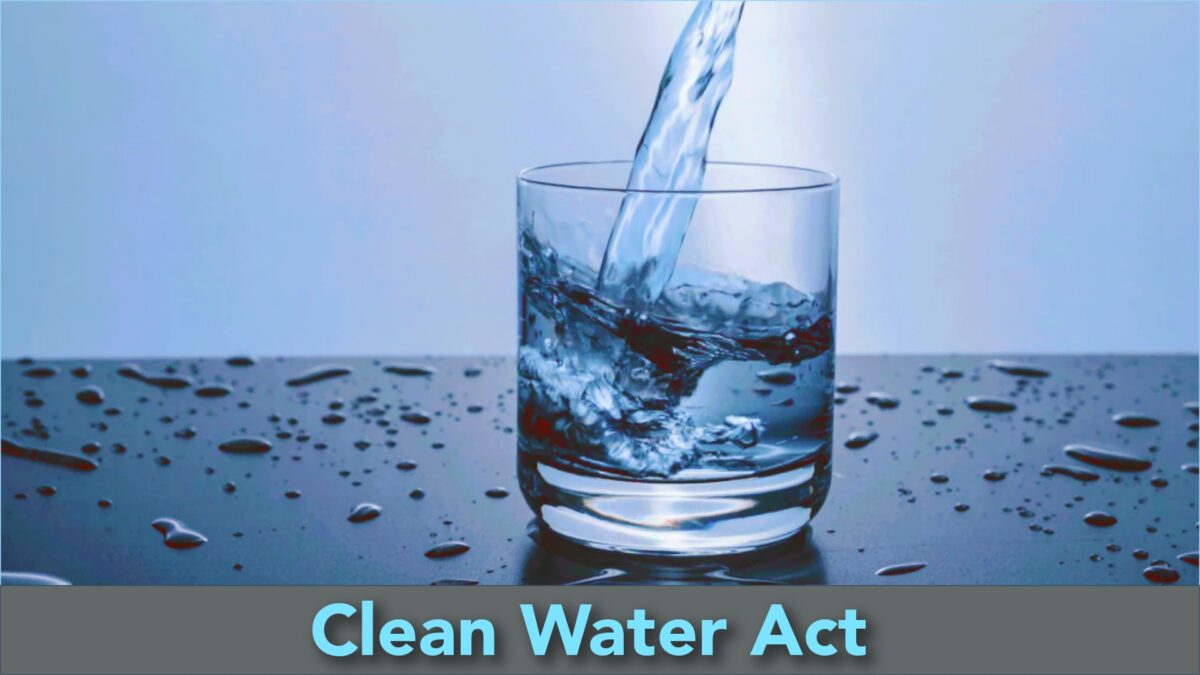Table of Contents
What Is Clean Water Act?
The Clean Water Act is a special law made to keep our water clean and safe to use. It helps to stop things like dirty waste from factories and cities, and yucky stuff from farms, from getting into our rivers and lakes.

This law is very important because it makes sure that we have clean water to drink, swim in, and use for other things. Thanks to the Clean Water Act, our water is much cleaner and healthier for everyone!
Description
Back in 1948, the Federal Water Pollution Control Act was passed to try and keep our water sources clean. But things got worse and worse as the years went by and by 1972 it was clear that things had to change. Our water resources were getting really dirty because of all kinds of pollution, and many rivers and lakes were no longer fit for swimming, fishing, or other fun activities.
So they updated the law in 1972, making it stronger and more effective. They set up new programs to control pollution and made it easier for states to make sure their water met certain standards. They also created a system for regulating the discharge of pollutants into waterways.
This system is still in place today, and helps make sure our water stays clean and safe for all of us to use and enjoy.
Key provisions of the Clean Water Act
The Clean Water Act is a complex law with many different provisions and requirements. Some of the key provisions of the law are listed below:
- National water quality standards – The Clean Water Act establishes national standards for water quality that apply to all waters of the United States, including rivers, lakes, streams, and wetlands. These standards set limits on the amount of pollutants that can be present in surface water, and are designed to protect the health of people and wildlife.
- Point source pollution control – The Clean Water Act requires all point sources of pollution, such as factories, power plants, and wastewater treatment plants, to obtain permits for discharging pollutants into navigable waters. These permits are issued by the Environmental Protection Agency (EPA) or by state agencies that have been authorized by the EPA.
- Non-point source pollution control – The Clean Water Act also addresses non-point sources of pollution, such as agricultural runoff and urban stormwater runoff. These sources of pollution are more diffuse and harder to regulate than point sources, but the law requires states to develop plans for controlling non-point source pollution.
- Wetlands protection – The Clean Water Act provides protection for wetlands, which are important habitats for many species of plants and animals. The law requires permits for any activities that would discharge pollutants into wetlands, and establishes a program for protecting and restoring wetlands.
- Water quality trading – The Clean Water Act allows for the trading of pollution credits between point sources of pollution. This system allows polluters to offset their own pollution by purchasing credits from other sources that have reduced their pollution below the required levels.
- Citizen enforcement – The Clean Water Act allows citizens to file lawsuits against polluters who are violating the law. This provision has been an important tool for enforcing the law and holding polluters accountable for their actions.
Impact of the Clean Water Act
Since its enactment in 1972, the Clean Water Act has had a significant impact on water quality in the United States. The law has helped to reduce pollution from point sources such as factories and wastewater treatment plants, and has also led to improvements in the management of non-point source pollution.
According to the EPA, more than 90% of the population in the United States now has access to clean drinking water, and the number of water bodies that are unfit for swimming, fishing, or other recreational activities has declined significantly. The law has also helped to protect important aquatic habitats such as wetlands, which are critical for maintaining biodiversity and providing ecosystem services.
Despite these successes, there are still challenges to ensuring clean and healthy water resources for all. Non-point source pollution remains a significant challenge, particularly in areas with high levels of agricultural activity. Climate change is also putting pressure on water resources, with changing precipitation patterns and increasing temperatures affecting water availability and quality.
There have also been challenges in implementing and enforcing the Clean Water Act. Some industries and municipalities have resisted efforts to regulate their discharges, and there have been legal challenges to the law’s provisions. In recent years, the EPA has also been subject to budget cuts and political pressure, which have limited its ability to enforce the law effectively.
Moving forward, there is a need to continue to strengthen and enforce the Clean Water Act to ensure that all water resources in the United States are protected and maintained for future generations. This may involve developing new technologies and management practices for controlling pollution, as well as promoting greater public awareness and engagement around water quality issues.
Sum Up
The Clean Water Act of 1972 is a landmark environmental law that has had a significant impact on the protection of water resources in the United States.
The law has established a comprehensive framework for regulating water quality, and has helped to reduce pollution from point sources and protect important aquatic habitats.
But, there are still challenges to ensuring clean and healthy water resources for all, and ongoing efforts are needed to enforce and strengthen the law in the face of new environmental challenges.
